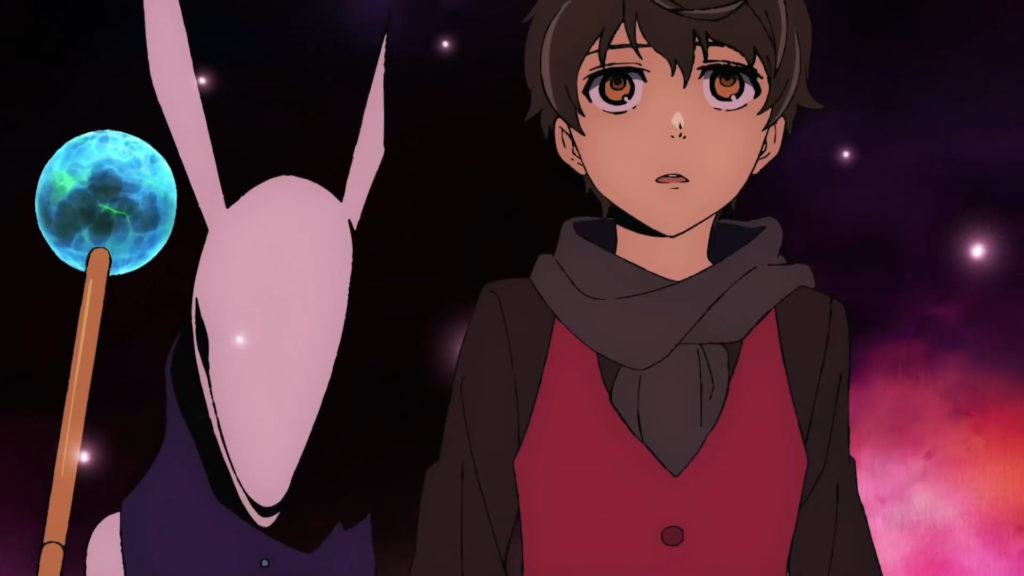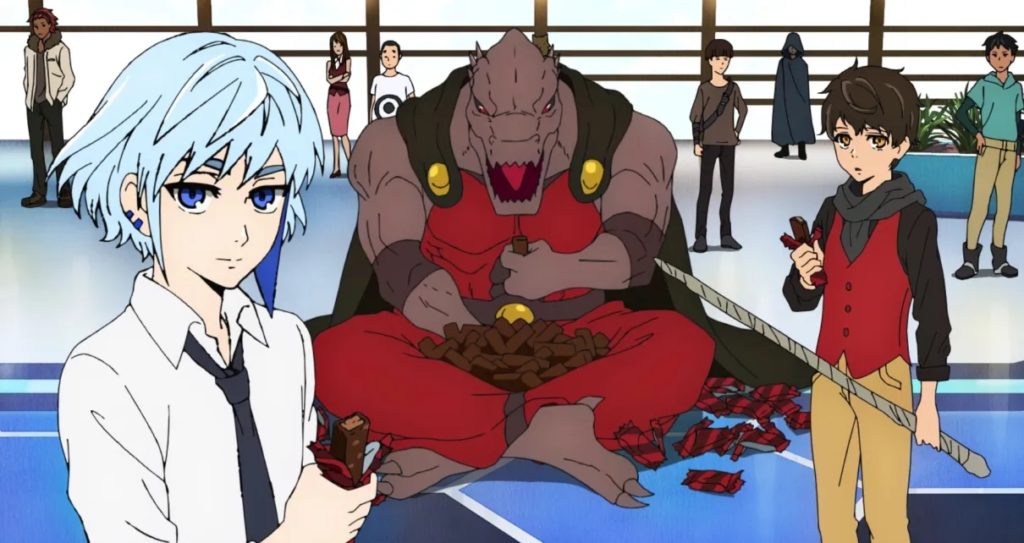Tower of God
September 5, 2023 · 0 comments
By Andrew Osmond.

Tower of God originated with one young South Korean in the middle of his country’s military service. His experience was gruelling, but it didn’t shut down his imagination. Indeed, it may have helped fuel it.
His name was Lee Jong-Hui, and he’d always been fascinated by comics, the forbidden fruit of his childhood. Once he was school age, his parents forbade him to read them in the house, and he had to scrounge them from schoolfriends. Lee read Korean comics, of course, called manhwa, but he read strips from Japan too. Interviewed years later by Crunchyroll, Lee mentioned manga classics across genres – Akira, Slam Dunk and the horror-action Parasyte. He remembered begging his parents on his knees for a volume of another manga – Dragon Ball.
Lee also drew strips. Early on, they were based on animated films that he’d seen, but with a fan’s skew. “I would change the relationship of two characters from hating each other to being friends, or change the ending into my own ideal ending,” Lee said. And even when he was doing time in the army, being ground down daily, he still drew his dreams on paper. One dream in particular – an image of a boy in front of a giant tower.

“Most of my ideas were either about a young boy facing impossible odds,” Lee said, “or a young boy never being able to win in an impossible situation. I thought about how interesting it would be to see a young boy successfully defeat and overcome those situations in such a brutal world.” Of course, that sounds suspiciously like a young man’s reaction to being forced into military service. In a press-pack interview, Jonathan Clements asked Lee directly if his Tower story was a reflection of his army experience. “I wish I could say none at all, but I think it’s probably seeped in everywhere.”
During his army time, Lee came up with the basic concept for a story and the prologue to it. It was about a year and a half after his military discharge, when he was at college, that Tower of God began its serialisation. Like many manhwa, the strip was published online; it was a “webtoon,” designed to be read by scrolling on a smartphone. You can read a free legal copyin English online at the webtoons.com site. Lee also adopted an artist’s pseudonym, by which he’s now known to the world. It’s S.I.U. which stands, rather darkly, for Slave In Utero.

Over the next decade, the webtoon platform on which Tower of God was published – which, confusingly, is just called “Webtoon” – became a phenomenon, with English versions of its strips since 2014. In 2022, Time magazine reported that Webtoon had 89 million monthly active users. According to the Forbes site, Webtoon is now worth more than the entire comics industry in America.
During the platform’s spectacular rise in the 2010s, Tower of God was one of Webtoon’s flagship titles. S.I.U. (as we’ll call the artist from now on) commented on this with the same self-effacement you find with overnight manga sensations like Hajime Isayama (Attack on Titan). But S.I.U.’s remarks also suggest a terrible worry, the trepidation of someone realising that everyone wants to read his story, but can he keep the story good enough?
In the Crunchyroll interview, S.I.U. said, “My comic’s demand from readers, the scale of the company, sales from work, and even recognition are increasing faster than I ever expected. I sometimes wonder if I was able to gain recognition so rapidly due to all the people who helped me, working in the comics industry, rather than because of the few qualifications I have… I feel very grateful and lucky, but sometimes also feel the pressure to constantly change and improve.”

In 2020, Tower of God was folded into Japanese media. The webtoon was turned into an anime by the venerable Japanese studio Telecom Animation Film, co-produced by Crunchyroll in America; a second season is now in the pipeline. The anime brought the story to the attention of fans who haven’t found webtoons yet, as Tower of God was reframed through an “anime” lens.
And indeed, Tower of God lends itself to being seen that way. NEO magazine described its plot as stripped-down simplicity. “Youngsters must make their way through the tower’s dozens of floors, passing tests, forming alliances and fighting rivals, all to get closer to the top.” Most obviously, this is very akin to the Shonen Jump epic Hunter x Hunter, which could be described in exactly the same way.
But right from the off, there’s a difference. Tower of God feels higher-stakes, a more serious kind of adventure. That’s not to say it’s humourless. On the contrary, it’s full of Shonen Jump-ish comedy and crazy characters, such as the perpetually cross Rak Wraithraiser, a mighty warrior who gets very peeved if you point out he that looks like an upright alligator. (S.I.U. said that Rak is the character he adores the most.)

But there’s still a strong sense that the key players aren’t out to have fun, and that’s especially true of the boy hero, Bam. He’s not climbing the tower because he wants to be like his dad, or because he wants to be king of the world.
No, Bam is motivated by the most important person in his world, a girl called Rachel, who taught him and cared for him when she found him as an amnesiac and helpless child. Now Rachel has vanished into the tower for her own reasons, and Bam is absolutely frantic to find her again. That makes him less like Naruto or Luffy, and more like the romantic hero of a Makoto Shinkai film or like the gentle Tanjiro in Demon Slayer.
Tower of God started before such titles started trending. It may still have benefited from their popularity, as many foreign readers started getting into the strip in the 2010s. It’s doubtful that S.I.U. cares either way, though. Tower of God may certainly fit with a lot of popular story algorithms today, but that doesn’t stop it being a personal story too.
S.I.U. acknowledged that his military experience probably “seeped” into Tower of God. He also told Clements, “I felt that this story had some resonance with the problems experienced by students or newcomers who are new to society…. Although the characters have grown to some extent now, I still see a lot of that in their eyes.”
Tower of God is out in the world, for everyone to bring their own experience to it. But as you enjoy and relate to Bam’s adventures, it’s also worth considering S.I.U.’s personal and national background. For example, how much does Bam’s desperation to beat the tower reflect the time when S.I.U. had to have a buzzcut and enter grueling military service?
Andrew Osmond is the author of 100 Animated Feature Films. Tower of God is released in the UK by Anime Limited.
Leave a Reply